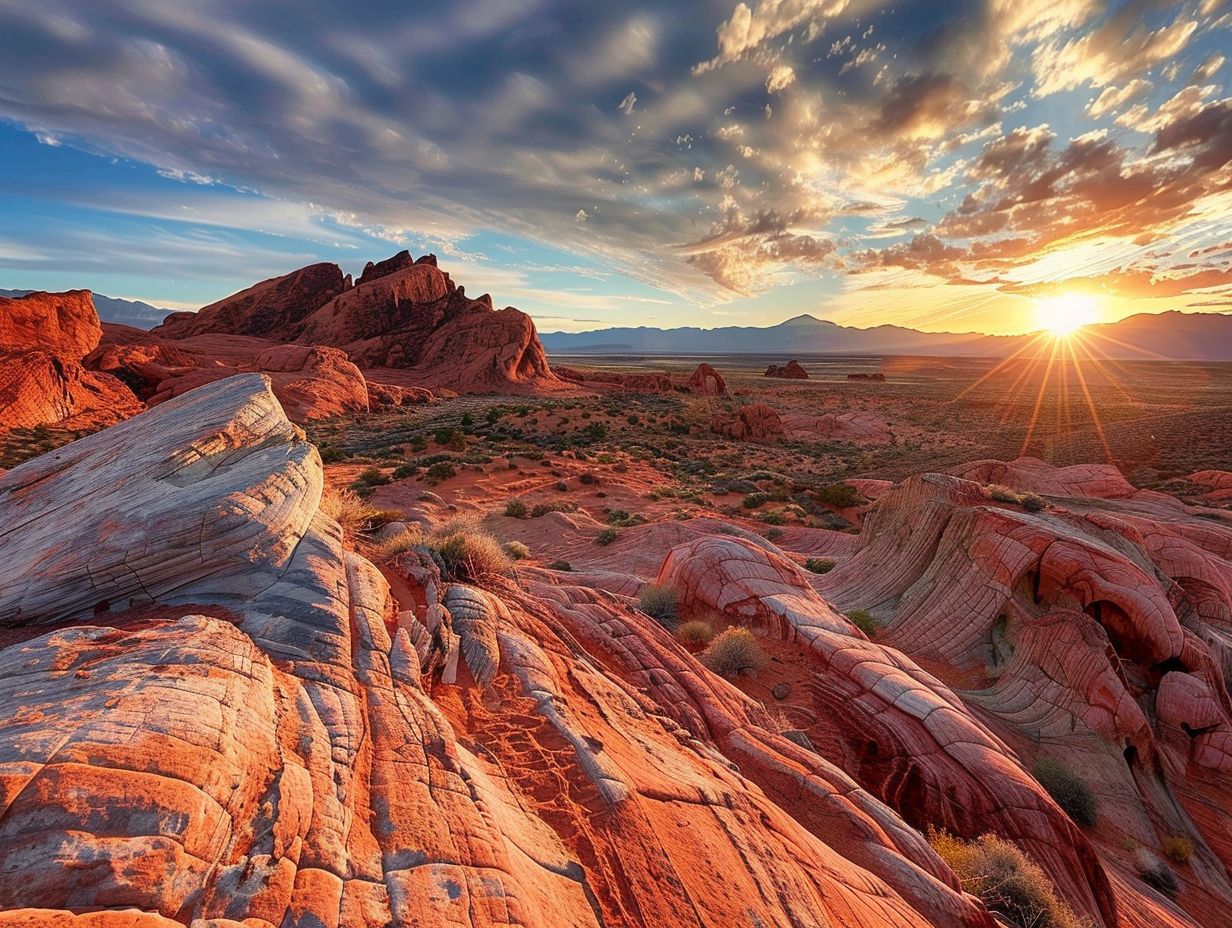The Valley of Fire State Park in Nevada experiences a desert climate with mild winters and hot summers. The average annual rainfall in the park is four inches, with most of the precipitation coming in the form of light winter showers and summer thunderstorms.
Average Rainfall in Valley of Fire State Park by Month
Here’s a breakdown of the average rainfall in the Valley of Fire State Park by month:
| Month | Average Rainfall (inches) |
|---|---|
| January | 1.08 |
| February | 0.93 |
| March | 0.60 |
| April | 0.26 |
| May | 0.16 |
| June | 0.09 |
| July | 0.52 |
| August | 0.67 |
| September | 0.44 |
| October | 0.47 |
| November | 0.52 |
| December | 0.56 |
As you can see, the wettest months are typically January and February, with an average of 1.08 inches and 0.93 inches of rainfall, respectively. March sees a slight decrease in rainfall to an average of 0.6 inches, followed by a further decrease in April to an average of 0.26 inches. May is the driest month, with an average of just 0.16 inches of rainfall.
Summer Thunderstorms in Valley of Fire State Park

June marks the beginning of the summer season, and with it comes a slight increase in rainfall to an average of 0.09 inches. However, July and August are the peak months for thunderstorms, with an average of 0.52 inches and 0.67 inches of rainfall, respectively. These summer thunderstorms can be intense and can lead to flash flooding in the park.
Rainfall Patterns in the Shoulder Seasons
September sees a decrease in rainfall to an average of 0.44 inches, followed by a slight increase in October to an average of 0.47 inches. November and December see a slight decrease in rainfall to an average of 0.52 inches and 0.56 inches, respectively.
Potential for Flash Floods
It’s worth noting that while the Valley of Fire State Park experiences relatively low rainfall, the area can still be prone to flash floods during heavy rainstorms. Visitors are advised to stay informed about weather conditions and to exercise caution when exploring the park during rainy weather.
Unique Geological Features and Formations
The Valley of Fire State Park is known for its unique geological features and formations, including the iconic Beehives, the Atlatl Rock, and the Petrified Logs. These formations were created over millions of years by the forces of erosion, weathering, and tectonic activity.
Outdoor Activities and Attractions
The park offers a variety of outdoor activities and attractions, including hiking, rock climbing, camping, and wildlife viewing. Visitors can explore the park’s many trails, which offer stunning views of the surrounding landscape.
Conclusion
The Valley of Fire State Park is a unique and fascinating destination, with a desert climate that is characterized by mild winters and hot summers. While the park experiences relatively low rainfall, it can still be prone to flash floods during heavy rainstorms. Visitors to the park are advised to stay informed about weather conditions and to exercise caution when exploring the park during rainy weather.
References:
- https://www.timeanddate.com/weather/%405514329/climate
- https://parks.nv.gov/learn/natural-resources-climate/natural-resources-and-climate-of-valley-of-fire-state-park
- https://www.accuweather.com/en/us/valley-of-fire-state-park/89040/may-weather/21517_poi
- https://www.weatherworld.com/climate-averages/nv/valley%2Bof%2Bfire%2Bstate%2Bpark.html
- https://wrcc.dri.edu/cgi-bin/cliMAIN.pl

